Privacy Policy | Terms and Conditions | Disclosure Statement | License Policy
COPYRIGHT © 2024 | NUMBER 8 COOKING | ALL RIGHTS RESERVED.

Privacy Policy | Terms and Conditions | Disclosure Statement | License Policy
COPYRIGHT © 2024 | NUMBER 8 COOKING | ALL RIGHTS RESERVED.

Privacy Policy | Terms and Conditions | Disclosure Statement | License Policy
COPYRIGHT © 2024 | NUMBER 8 COOKING | ALL RIGHTS RESERVED.
This mother sauce recipe is the business. If you’re looking to make a delicious tomato sauce that rivals what you would get at a high-end restaurant, look no further!
French tomato sauce is one of the five mother sauces and has been around for centuries. I’ve added my own touch removing the salt pork and replacing it with Kransky sausage.
ADVERTISEMENT CONTENT BELOW
I use fresh tomatoes, onion, garlic, carrots, celery, and lots of fresh herbs. This adds a wonderful healthy kick and a herbaceous flavor. That will have your friends doing backflips for the recipe.
We’ll guide you through the steps to create a professional, flavorful restaurant quality tomato sauce. That can elevate just about any dish. So, read on to get this awesome tomato mother sauce recipe.
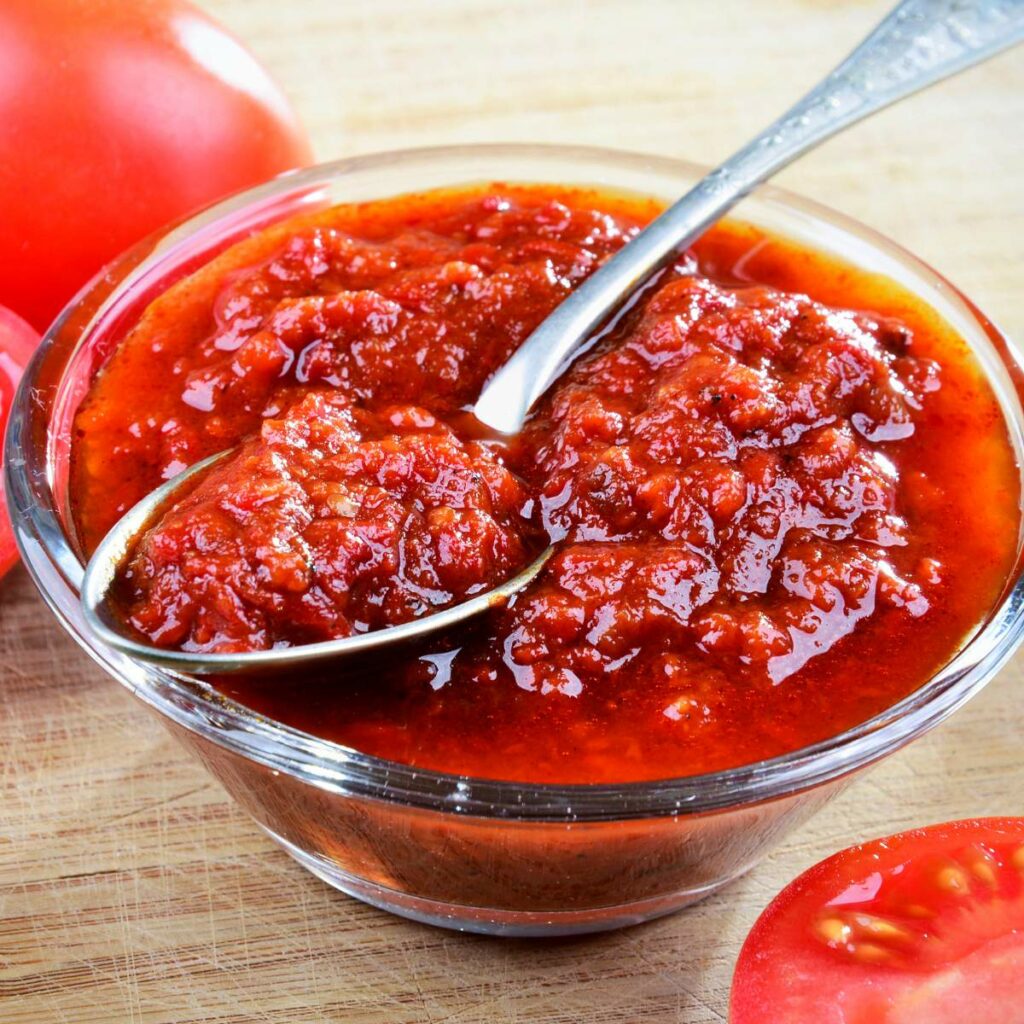
ADVERTISEMENT CONTENT BELOW
Tomato sauce, also known as “sauce tomate,” is a fundamental ingredient in many dishes around the world. This mother sauce recipe is made by cooking down fresh or canned tomatoes with aromatics such as onions, carrots, celery, garlic, and fresh herbs. Then blend to create a full-bodied, chunky, and flavorful sauce.
In French cuisine, tomato sauce is one of the five mother sauces, which are the foundation of all other sauces. Along with Hollandaise, Béchamel, Espagnole, and Velouté. Tomato sauce is an essential building block for countless dishes.
One of the reasons tomato sauce is such a versatile ingredient is that it can be adapted in many ways. Adding cream, chili peppers, or stock can transform the sauce into a completely different flavor profile.
And by varying the herbs and spices used, the sauce can be customized. Whether you’re making classic spaghetti and meatballs or experimenting with new flavor combinations, tomato sauce is a staple ingredient that belongs in every home cook’s repertoire.
The star of the show, of course, is the fresh tomatoes. Look for ripe tomatoes that are firm and free of any overly soft spots. Or you could use canned tomatoes, however, make sure they’re packed in tomato puree or juice. Try and avoid any that have added salt, sugar, or full of preservatives.
How to season food is an art that combines creativity, intuition, and a deep understanding of flavors. That transforms ordinary ingredients into extraordinary culinary masterpieces.

ADVERTISEMENT CONTENT BELOW
I always try and use fresh tomatoes. I also peel them and remove the seeds. This is because I don’t want stringy bits of tomato skin in the sauce.
Also, we lightly blend the sauce, and if the seeds could be cracked, which will give the sauce an overly bitter aftertaste.
Next up are the onions, celery, carrots, and garlic. These aromatics add another level of flavor.
When simmered with the tomatoes they impart their unique flavors that complement the tomatoes. They also add body to the sauce.
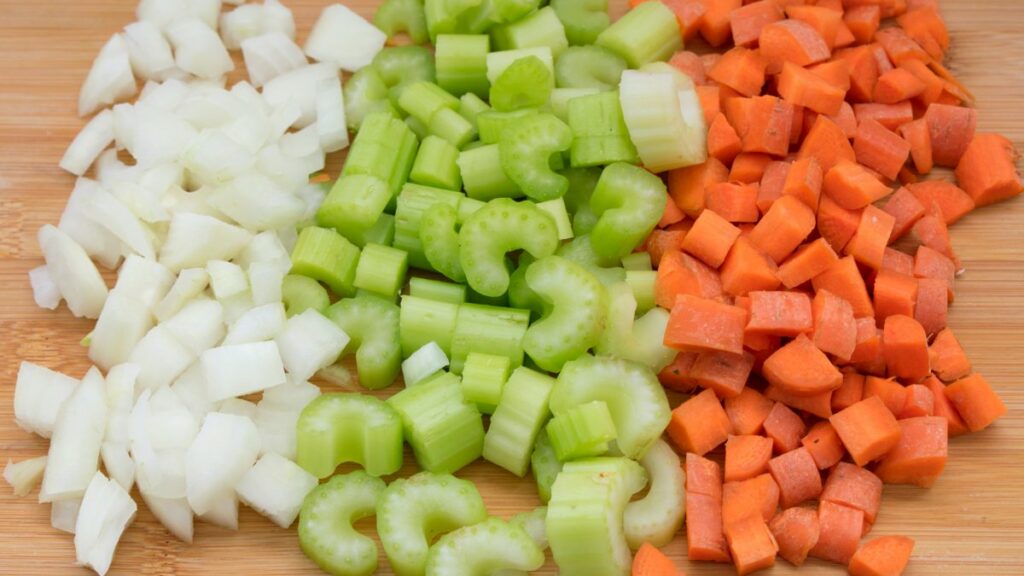
Now on to the fresh herbs, I am using rosemary, sage, thyme, and chives. These I finely chop and add at different stages of the cooking process.
Chefs Pro Tip — Adding fresh herbs at different stages of the cooking process will give you two flavor profiles. First, the earthy flavors of rosemary and sage are added when sweating the vegetables. Next incorporating the thyme and chives at the end of the cooking will give you a herbaceous kick.
The other ingredient that I’m using is Kransky sausages. Sure traditionally a French tomato mother sauce recipe uses salt pork. However, I’ve found the Kransky adds complexity to the tomato sauce.

Peeling fresh tomatoes is an important step in making a restaurant quality tomato sauce. The skin can be tough and can create stringy bits that may not be desirable in certain dishes. Fortunately, peeling tomatoes is a fairly simple process.
To peel tomatoes, start by taking the center core out of the top and scoring an “X” on the bottom of each tomato with a sharp knife.
Then, blanch the tomatoes in boiling water for about 30 seconds, or until the skin starts to loosen. Immediately transfer the tomatoes to a bowl of ice water to stop the cooking process.
Chefs Pro Tip — Coring the Tomatoes, hold the tomato in your left hand (for right-handed people). Hold the paring knife in your right hand.
Hold it down by the end, and peace the tomato using your right thumb as a guild. Turn the tomato with your left hand 360°. The core will pop out, it is that easy.
This technique will only remove the core of the tomato, so you won’t waste any of the flesh. Also more importantly using your thumb as a guide will stop the knife from slipping and cutting you.
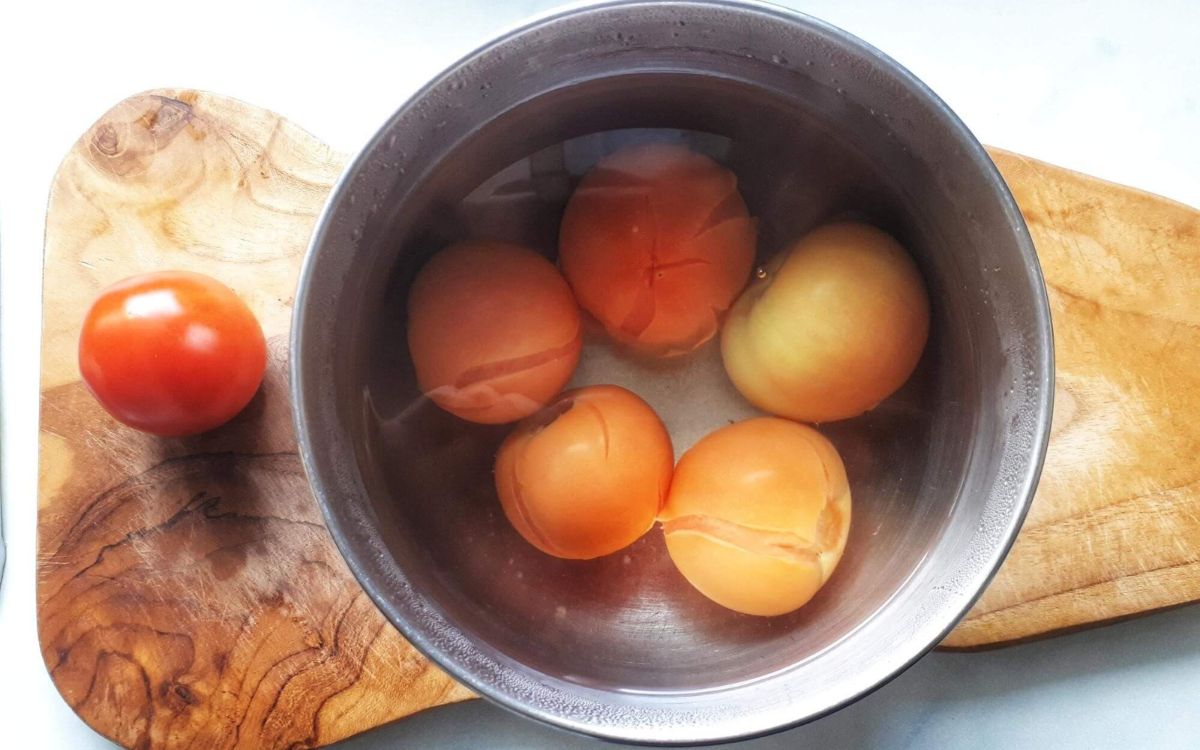
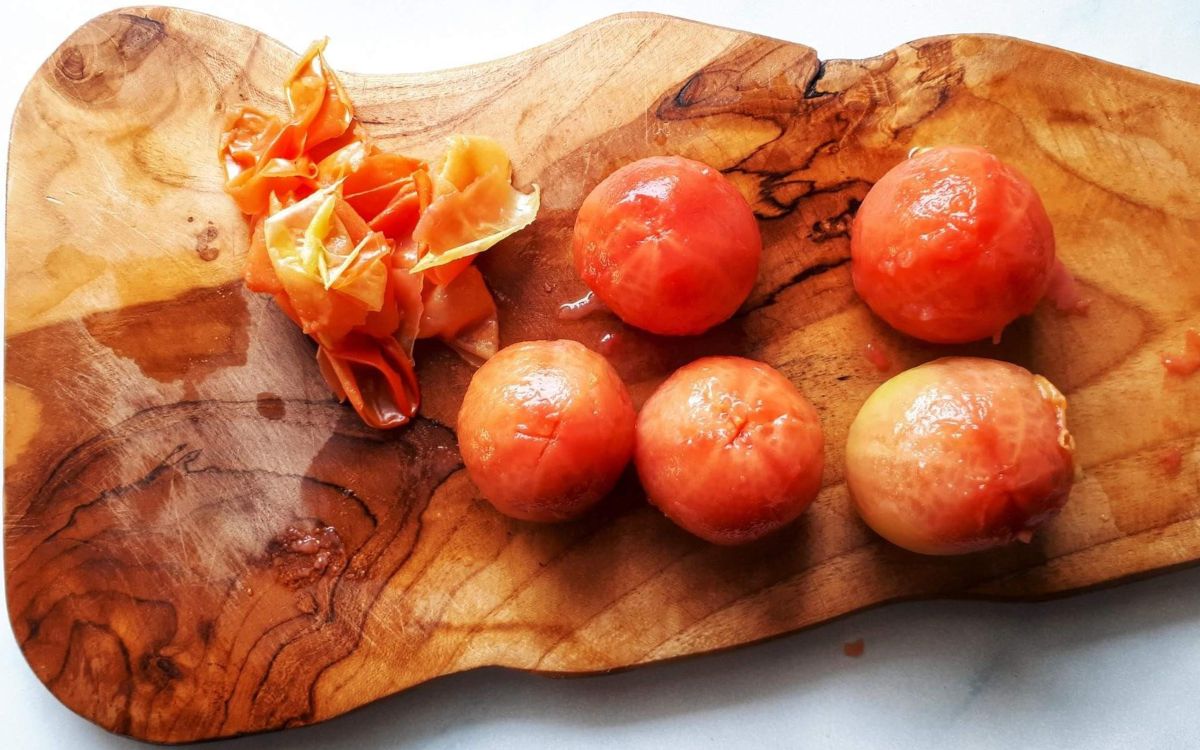
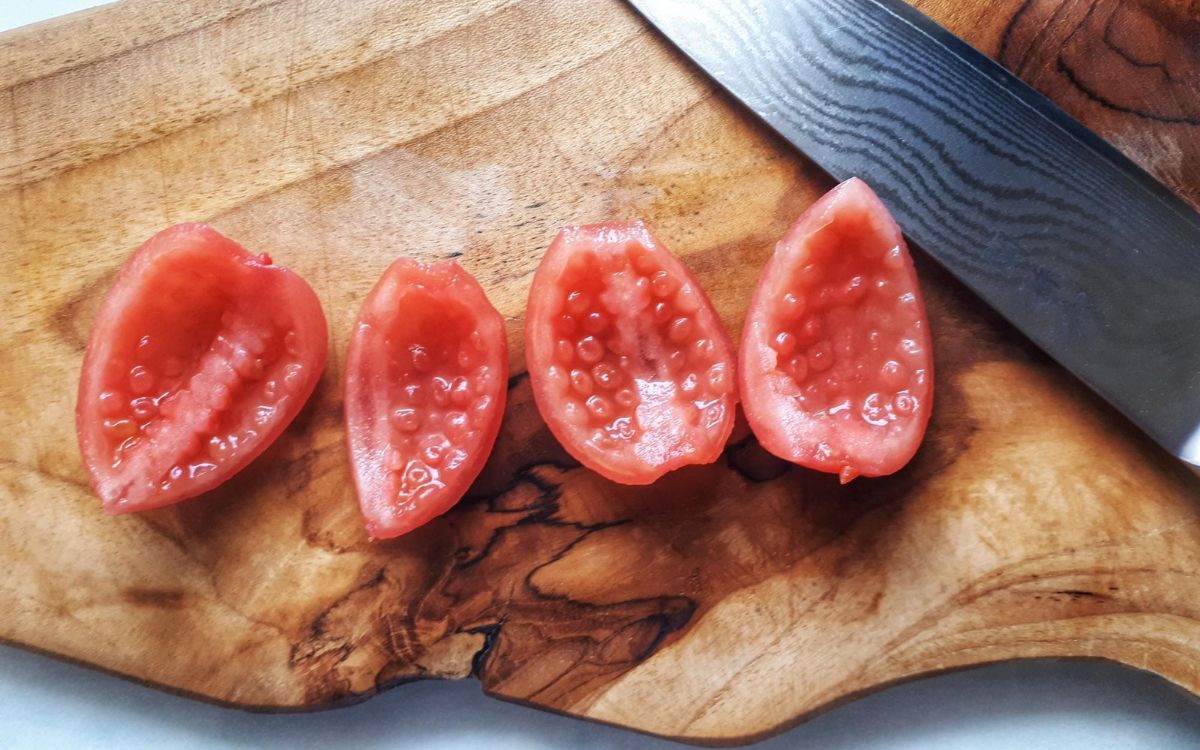
Once the tomatoes are cool enough to handle, you should be able to easily peel off the skin. They should just slide off by using your fingers or a paring knife.
When the tomatoes have been peeled quarter them and remove the seeds. This can be done by scraping them out with a spoon. Don’t throw away those tomato seeds! They’re perfect for adding to beef, vegetable or even mushroom stock.
If you have a lot of tomatoes to peel, you may find it helpful to work in batches. Blanch a few tomatoes at a time and then transfer them to the ice water.
Then move on to the next batch. You can also use a tomato corer to remove the core before blanching, which can make the process even easier.
Peeling fresh tomatoes may seem like a fiddly time-consuming step. However, it can make a big difference in the final texture of your tomato sauce. With a little practice, you’ll be able to quickly and easily peel tomatoes like a pro.
Chefs Pro Tip — Sautéing the Kransky sausages first releases all those beautiful fats and oils. This creates the base for this fantastic mother sauce recipe.

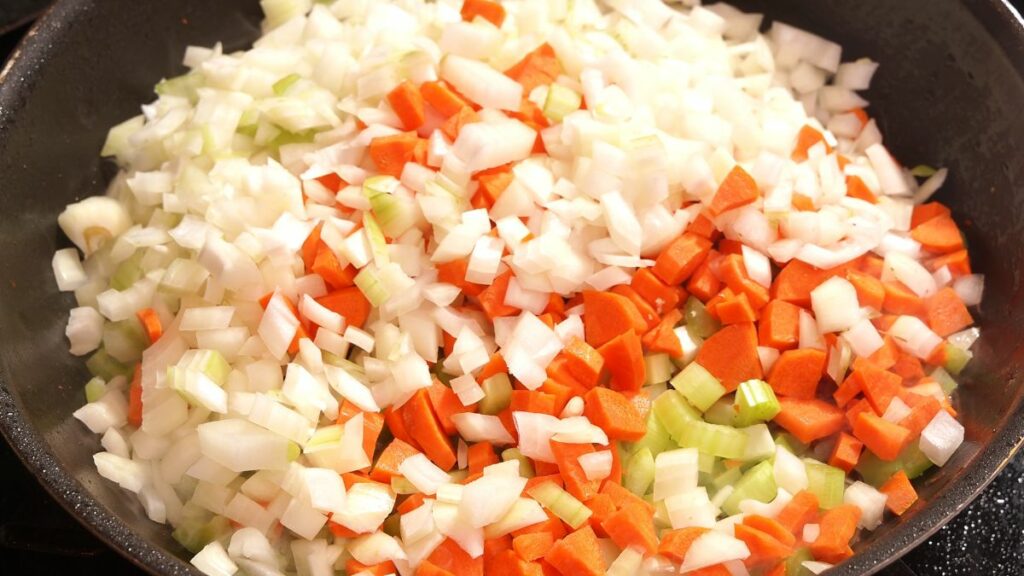
If you don’t have a blender you can use a potato masher. The vegetables and Kransky will easily mash after they’ve been cooked for 2 hours.
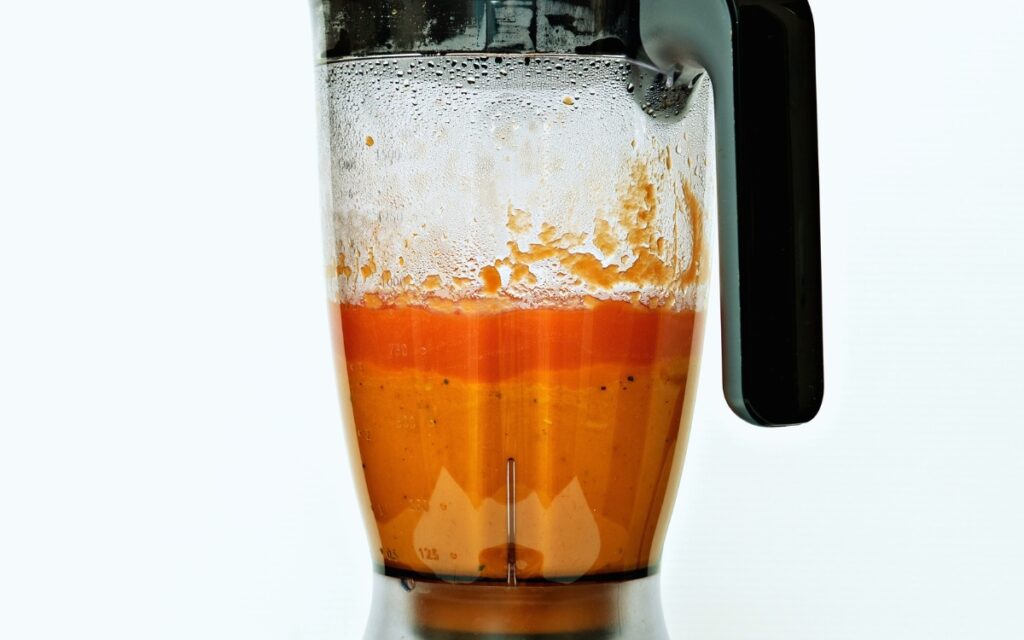
The small techniques and processes make this recipe’s restaurant quality. Using fresh ingredients like ripe tomatoes, fresh herbs, and extra virgin olive oil, peeling the tomatoes, and removing the seeds.
Adding Kransky sausages and slowly simmer the sauce for 2 hours to help develop its flavors. Adding the fresh herbs at different stages of cooking the sauce.
Lastly, season the finished sauce with Himalayan pink salt, freshly ground black pepper, and a little brown sugar.
These small techniques and processes make this mother sauce recipe a professional-tasting restaurant quality sauce.
Yes, you can definitely use canned tomatoes if you prefer. You’ll need to make sure the tomatoes are packed in tomato puree or juice. Try and avoid any that have added salt, or sugar, or are heavy on preservatives.
Yes, you can make the sauce ahead of time. This is the best way to make a restaurant quality tomato sauce recipe. Cooling and storing this sauce in the refrigerator will give the sauce time to develop its flavors. The sauce can be stored in the fridge for up to a week or in the freezer for up to three months. Just reheat it gently when needed.
Our restaurant quality tomato sauce is incredibly versatile. You can use this French tomato sauce for fish and chicken dishes. It can be used in casseroles, stews, and braised dishes. It can also be used as a dipping sauce for bread or a topping for roasted vegetables. Its uses are only limited by your imagination.
ADVERTISEMENT CONTENT BELOW
Cooking is a science and a skill that requires a deep understanding of both the technical and creative aspects. Cooking is also a matter of precise measurements and ratios.
For example, baking is particularly sensitive to accurate measurements and temperatures. A slight deviation in the amount of an ingredient or cooking degrees can result in a completely different outcome. So, to help you here is a handy little unit converter tool for cooking without guesswork.
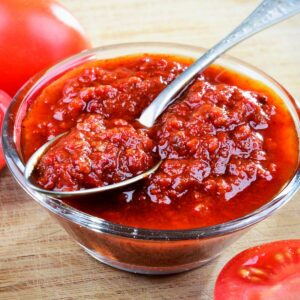
DISH SUMMARY

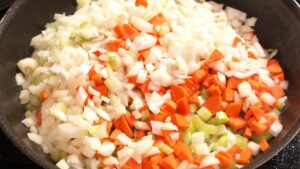
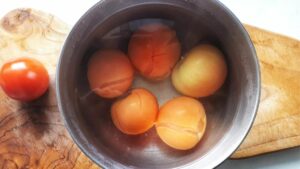
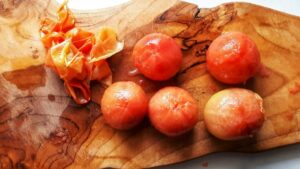


This recipe and its accompanying photographs are protected by copyright. While we encourage you to share or link back to this recipe. We ask that you do not copy and paste the full recipe onto social media or your blog.